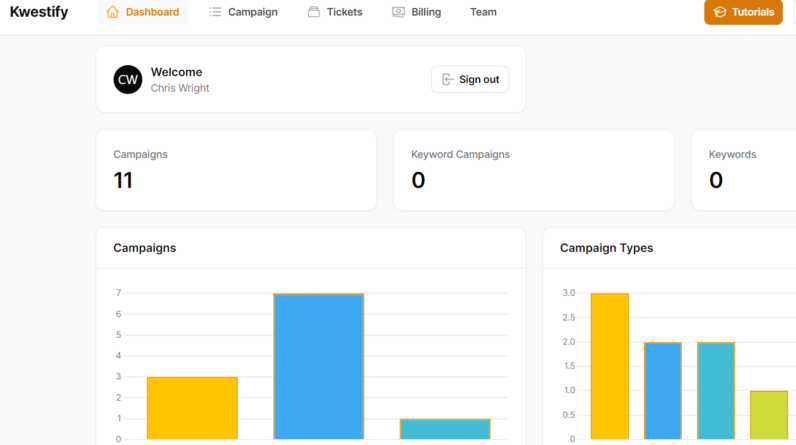
Have you ever wondered how to keep track of your affiliate marketing performance? The world of affiliate marketing can be exciting and profitable, but it can also be challenging to measure your success. Luckily, there are effective strategies and tools available to help you stay on top of your performance. In this article, we will explore different methods to track and evaluate your affiliate marketing efforts, ensuring that you can make informed decisions and optimize your results. Whether you are a beginner or an experienced marketer, this guide will provide valuable insights and tips to help you effectively track your affiliate marketing performance.
Why Track Affiliate Marketing Performance?
Affiliate marketing is a powerful and cost-effective way to promote products and services, but without tracking your performance, you are essentially operating in the dark. Tracking affiliate marketing performance allows you to understand the effectiveness of your marketing efforts and make data-driven decisions to improve your results. By monitoring key metrics, analyzing traffic sources, utilizing attribution models, and implementing event tracking, you can optimize your affiliate marketing strategy and achieve better outcomes.
Understanding the Importance of Tracking
Tracking your affiliate marketing performance provides valuable insights into the effectiveness of your marketing campaigns. It allows you to measure the success of your promotional efforts, track the number of clicks and conversions generated, and determine the revenue generated from your affiliate partnerships. By monitoring these metrics, you can identify what is working and what areas need improvement, enabling you to optimize your strategies for better results.
Benefits of Tracking Affiliate Marketing Performance
There are several benefits to tracking your affiliate marketing performance. Firstly, it provides you with a clear understanding of which traffic sources and campaigns are driving the most conversions and revenue. This information enables you to allocate your resources effectively and focus on the most profitable channels. Moreover, tracking allows you to identify any issues or bottlenecks in your marketing funnel, enabling you to make necessary adjustments for improved ROI.
Setting Up Tracking Systems
To effectively track your affiliate marketing performance, you need to set up tracking systems that capture the relevant data. Here are some key components to consider:
Choosing the right tracking platform
Selecting a tracking platform that suits your needs is essential. There are various options available, ranging from affiliate network tracking tools to third-party software. Look for a platform that offers robust tracking capabilities, accurate data reporting, and easy integration with your affiliate partners.
Installing tracking pixels
Tracking pixels are snippets of code that allow you to collect data about user behavior on your website. By placing these pixels on your affiliate landing pages, you can track conversions and gather valuable insights into user actions.
Implementing UTM parameters
UTM parameters are tags that you add to your affiliate URLs to track the source and medium of the traffic. By appending these parameters to your affiliate links, you can gain visibility into which campaigns and channels are driving the most conversions.
Using sub IDs
Sub IDs are additional tracking identifiers that you can include in your affiliate links to further segment your data. By adding sub IDs, you can track the performance of specific campaigns or traffic sources, allowing for more granular analysis and optimization.
Tracking Key Metrics
Tracking key metrics is crucial for assessing the performance of your affiliate marketing efforts. Here are some essential metrics to monitor:
Click-through rates (CTR)
CTR measures the percentage of users who click on your affiliate links or ads. It indicates how compelling your promotional content is and can help you evaluate the effectiveness of your marketing messages.
Conversion rate
The conversion rate represents the percentage of users who complete a desired action, such as making a purchase or filling out a lead form. Tracking the conversion rate enables you to measure the effectiveness of your affiliate campaigns in driving desired outcomes.
Revenue generated
Tracking the revenue generated from your affiliate marketing efforts allows you to monitor the financial impact of your campaigns. By comparing revenue figures across different campaigns or traffic sources, you can identify areas for improvement and focus on the most profitable channels.
Return on investment (ROI)
ROI measures the profitability of your affiliate marketing campaigns by comparing the revenue generated to the costs incurred. By calculating ROI, you can gauge the effectiveness and efficiency of your marketing efforts and make informed decisions about resource allocation.
Average order value (AOV)
The average order value represents the average amount spent by customers who make a purchase through your affiliate links. Tracking AOV can help you identify opportunities to increase sales or incentivize higher-value orders.
Monitoring Traffic Sources
Understanding the sources of your traffic is essential for optimizing your affiliate marketing performance. Here are some strategies for monitoring and analyzing traffic sources:
Identifying top-performing traffic sources
By analyzing your data, you can identify the traffic sources that drive the most conversions and revenue. This information allows you to allocate your resources effectively and focus on the channels that produce the best results.
Analyzing referral data
Referral data provides insights into where your traffic is coming from. It allows you to understand which websites or platforms are sending visitors to your affiliate links. Analyzing referral data can help you identify high-value partnerships and explore new partnership opportunities.
Using Google Analytics
Google Analytics is a powerful tool for monitoring your website’s performance and tracking the effectiveness of your affiliate marketing campaigns. By integrating Google Analytics with your tracking systems, you can gain detailed insights into user behavior, conversion paths, and traffic sources.
Split testing different traffic sources
Split testing involves running simultaneous campaigns with different traffic sources to determine which performs best. By comparing the results of these tests, you can identify the most effective traffic sources and optimize your marketing efforts accordingly.
Segmenting Performance by Campaigns
Segmenting your performance data by campaigns allows for more granular analysis and optimization. Here’s how you can effectively segment your affiliate marketing performance:
Creating unique tracking codes for each campaign
Assigning unique tracking codes to each campaign enables you to differentiate the performance of individual campaigns. By using distinct tracking codes or sub IDs, you can measure the success of specific strategies or promotional messages.
Measuring performance by individual campaigns
By tracking key metrics for each campaign separately, you can evaluate the effectiveness of different marketing initiatives. This data can help you identify successful strategies and areas for improvement, allowing you to optimize your campaigns for better performance.
Comparing performance across campaigns
Comparing the performance of different campaigns allows you to identify trends and patterns. It helps you understand which types of promotions, creatives, or messages resonate with your target audience and generate the most favorable outcomes.
Utilizing Attribution Models
Attribution models play a vital role in understanding how different marketing touchpoints contribute to conversions. Here’s how you can optimize your affiliate marketing performance through attribution modeling:
Understanding different attribution models
Attribution models determine how credit for conversions is distributed across different marketing touchpoints. Common models include first-click, last-click, linear, and multi-touch attribution. Understanding these models can help you assess the impact of each touchpoint on your conversion rates.
Choosing the right model for your affiliate marketing
Selecting the appropriate attribution model depends on your specific goals and marketing strategies. For example, if you prioritize driving initial awareness, a first-click attribution model may be more suitable. If you want to reward affiliates for their role in closing sales, a last-click attribution model may be more appropriate.
Analyzing the impact of different models on performance
By comparing the results of different attribution models, you can gain insights into how each touchpoint contributes to your affiliate marketing performance. This analysis allows you to make data-driven decisions on how to allocate resources, incentivize affiliates, and optimize your conversion funnel.
Analyzing Affiliate Network Reports
Affiliate network reporting tools provide valuable data and insights into your affiliate marketing performance. Here’s how you can effectively analyze these reports:
Leveraging affiliate network reporting tools
Most affiliate networks offer reporting tools that provide valuable data on impressions, clicks, conversions, and commission payouts. By regularly reviewing these reports, you can gain insights into your performance and identify areas for improvement.
Tracking affiliate conversions
Affiliate network reports allow you to track the conversions generated by each affiliate partner. This information enables you to evaluate the performance of individual affiliates and make informed decisions about partnership management and commission structures.
Monitoring commission payouts
Affiliate network reports also provide visibility into the commission payouts you receive from each affiliate partner. Tracking these payouts helps you assess the profitability of your partnerships and make necessary adjustments to maximize your return on investment.
Implementing Event Tracking
Event tracking allows you to monitor specific user actions on your affiliate landing pages. Here’s how you can effectively implement event tracking:
Tracking specific user actions
Event tracking enables you to monitor actions such as button clicks, form submissions, or video views on your website. By setting up event tracking, you can gain insights into user engagement and identify any friction points in your conversion funnel.
Using event tracking tools
There are various event tracking tools available, such as Google Tag Manager or tracking scripts provided by affiliate networks. These tools allow you to easily implement event tracking and collect meaningful data about user behavior on your website.
Analyzing key events for optimization
By analyzing the data gathered from event tracking, you can identify areas for improvement and optimize your affiliate marketing performance. For example, if you notice a high bounce rate on a specific page, you can experiment with different content or design elements to improve engagement and conversions.
Testing and Optimization Strategies
To continually improve your affiliate marketing performance, testing and optimization strategies are crucial. Here are some strategies to consider:
A/B testing different creatives
A/B testing involves comparing two versions of a creative (such as an ad or landing page) to determine which one performs better. By testing different elements, such as headlines, images, or calls to action, you can optimize your creatives for higher conversion rates.
Optimizing landing pages
Landing pages play a crucial role in converting visitors into customers. By optimizing your landing pages through elements like clear messaging, compelling visuals, and intuitive navigation, you can improve user experience and increase your conversion rates.
Analyzing conversion funnels
Analyzing your conversion funnel allows you to identify bottlenecks and areas for improvement. By tracking the steps users take from initial engagement to conversion, you can optimize each stage and remove any barriers that may prevent conversions.
Utilizing retargeting techniques
Retargeting helps you re-engage users who have shown interest in your products or services but have not yet converted. By using retargeting ads or emails, you can remind these users of their initial interest and encourage them to complete the desired action.
Continuous Monitoring and Improvement
To ensure long-term success with affiliate marketing, continuous monitoring and improvement are essential. Here’s how you can make the most of your performance data:
Regularly reviewing and analyzing performance
Consistently reviewing your performance data allows you to stay informed about your affiliate marketing results. By monitoring key metrics, identifying trends, and spotting areas for improvement, you can continuously optimize your strategies for better outcomes.
Making data-driven decisions
Base your decisions on the insights gained from your performance data. By analyzing the data, you can make informed decisions about your marketing strategies, resource allocation, and partnership management. This data-driven approach increases the likelihood of success and maximizes your ROI.
Implementing continuous optimization strategies
Affiliate marketing is a dynamic and ever-changing field. To stay competitive, it’s crucial to continuously optimize your strategies and adapt to market trends. By staying up to date with industry developments, experimenting with new approaches, and embracing a mindset of continuous improvement, you can stay ahead of the curve and achieve sustainable success in affiliate marketing.
In conclusion, tracking your affiliate marketing performance is crucial for understanding the effectiveness of your campaigns, optimizing your strategies, and achieving better outcomes. By setting up tracking systems, monitoring key metrics, analyzing traffic sources, utilizing attribution models, implementing event tracking, and continuously testing and improving, you can optimize your affiliate marketing performance and maximize your return on investment. With a data-driven approach and a commitment to continuous optimization, you can unlock the full potential of your affiliate marketing efforts.






